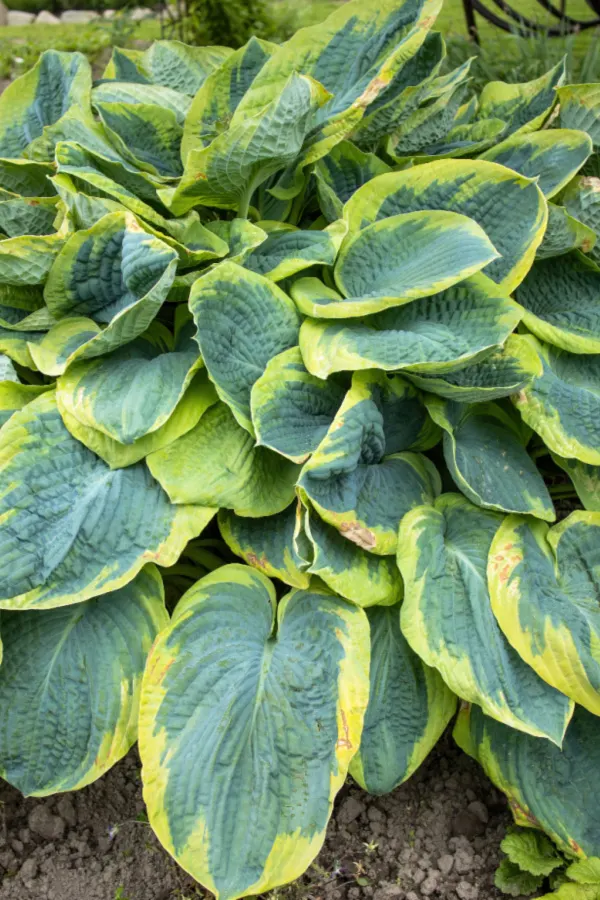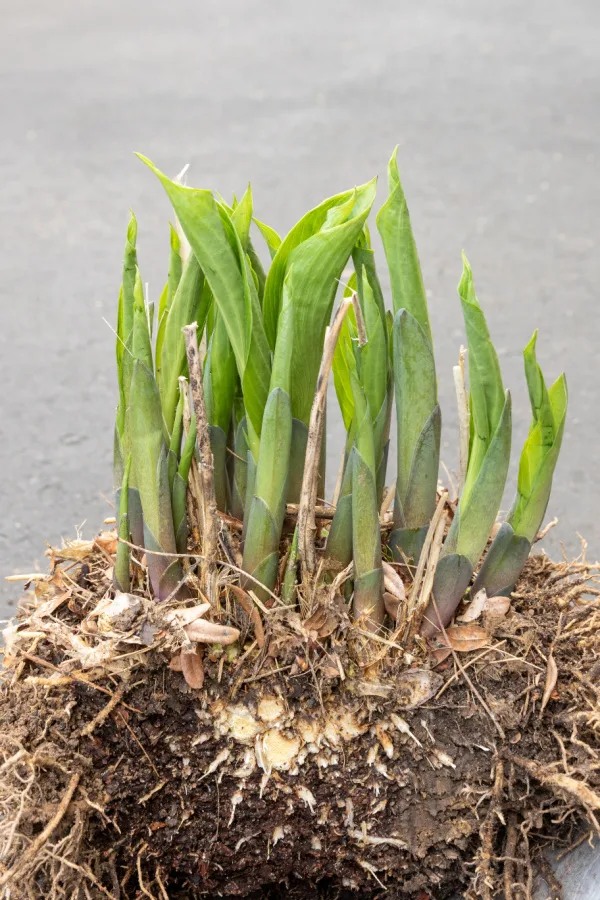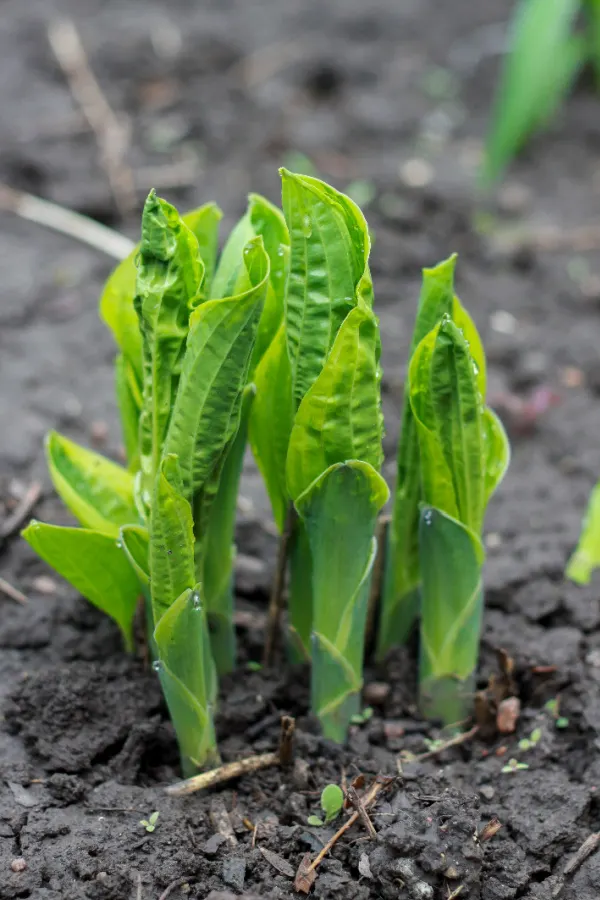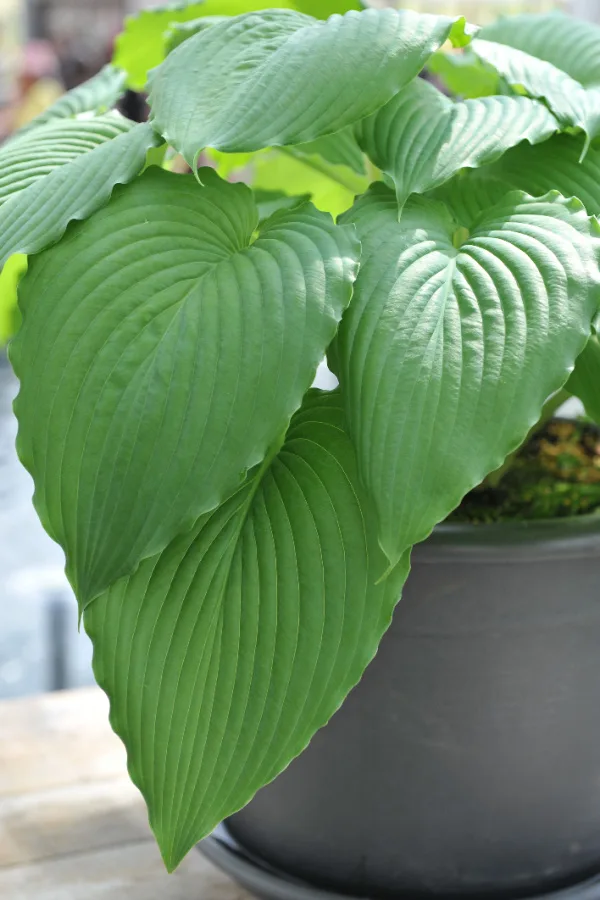Believe it or not, summer really is one of the best times of all to divide overgrown hostas. Not only can it help you rejuvenate overly large and/or struggling plants, but dividing also allows you to create plenty of additional hostas to fill your flowerbeds – and all for free!
Although you can dig up and split hostas in the spring or fall, there are a lot of advantages to dividing them in the middle of summer. At the top of the list is the fact that it’s far easier to tell which plants in your flowerbeds have grown a little too large for their space.
Let’s face it, it can be hard in early spring to judge just how large a hosta will grow by summer. All too often, the plants become so massive by July, they overtake a flowerbed. Even worse, by mid-summer, overly large hosta plants often have foliage that begins to fail or become highly damaged by pests.

Waiting till fall to take care of the issues means leaving your flowerbeds in less than ideal condition. And unfortunately, by the time Autumn rolls around, the leaves of hostas have already died back, once again making it hard to know the plants true size.
Why Summer Is Great For Dividing Hostas
By dividing in the summer, it’s easy to see exactly which hostas need help. At full size, gardeners can quickly tell which plants might be getting too big for their space, or, where they can use a few more to help fill in bare spots.
In addition, it is a great way to take care of any hostas that are showing signs of wear and tear. And there is almost zero worry of harming your plants by dividing in the summer. In fact, it can actually help them!
Although you can’t dig up, split and transplant most perennials during the hot summer months, that is not the case for hostas. They actually handle the entire process very well. The plant is so durable and hardy, it’s nearly impossible to kill!
The roots of a hosta plant grow in clumps. These clumps are not true “roots” but actually rhizomes – and rhizomes are extremely tough and resilient. When split, even in the middle of the hot summer, the rhizomes can quickly re-establish in the soil, with little danger of injury.

The good news is that by the rhizomes re-establishing during the summer months, they still have plenty of time to grow new foliage before fall. Even better, by going through that process in the summer, they are more than ready to grow incredibly well the following spring and summer!
How To Divide Overgrown Hostas In The Summer
So how easy is it to divide hosta plants in the middle of summer? It’s actually easier than you can imagine! All you need is a shovel and a good pair of hedge shears or clippers, and you are ready to go.
When dividing hostas in the summer, it’s important to understand you won’t be able to save the plant’s existing leaves. The stress from digging the plant up and then dividing and transplanting is simply too much for the plant to retain its foliage.
The good news is that new foliage will re-appear quite quickly. Especially if plants are receiving adequate water. That can actually be great for plants that were looking less than stellar. Not only can you slim overly large plants, they can regrow all new leaves and start fresh.
Cutting Back – How To Divide Overgrown Hostas In The Summer
When dealing with overgrown hostas, it’s best to start by cutting all of the foliage back. By removing the leaf canopy, it makes it much easier to see the root structure. Even more, it makes splitting the root ball into sections a much faster process as well.

A pair of hedge shears makes quick work of the task. Cut the hosta back to one to two inches above the ground. Leaving an inch or two of stems will help when you locate plants after replanting. Cutting them all the way to the ground can make it difficult to know where they are when it comes to watering them later.
Digging Up The Plant – How To Divide Overgrown Hostas In The Summer
Begin by digging around the entire perimeter of the plant. Use the remaining foliage stems as a guide, digging all around a few inches behind the edge of the stems. Once you have dug around the entire perimeter, take your shovel deeper and try to lift the plant out.
Usually, the plant will come out quite easily with this method. If the hosta is quite old and large, you can also remove it in sections. Once the entire root ball or sections are out of the ground, turn the plant over. This will make it easier to see the roots for cutting equal transplant sections.

To split the plant into new divisions, use a garden knife (hori-hori) or sharp shovel. If you have an exceptionally large root ball, a sharp axe is a great alternative. It can cut the roots quick and clean and with little effort.
Do not worry about damaging the roots when cutting. Again, hosta plants are extremely tough and resilient. As long as you keep divisions large enough to have a few inches of roots, they will regrow.
Creating Transplants – How To Divide Overgrown Hostas In The Summer
Leave a minimum of two square inches for each new plant you would like to create. Two to three-inch cuttings are ideal for hostas that will grow about a twelve inch canopy. Four to six inch root sections will develop hostas in the two to three foot canopy range.
You can create larger divisions for bigger plants, but they will need to be divided more frequently to keep manageable.
Transplanting – How To Divide Overgrown Hostas In The Summer
When transplanting in the summer, the key to success is getting the plants in the ground quickly. It is always best to transplant the same day you dig up and divide your hostas. This keeps the moisture in the plant and will speed the recovery time for new foliage.

If you simply can’t replant the same day, keep transplants in a cool, dark location and water them. They can survive for weeks, but again, they will recover much faster with speedy replanting.
Dig new planting holes a few inches wider and one inch deeper than the existing root section. Fill the bottom of your planting hole with an equal mix of soil and compost. Set the root section in the hole so the surface of the plant is equal to the surrounding soil.
Fill in around the roots with more of the compost and soil mix and water well to set the roots. The compost and soil combination will help roots to re-establish quickly and feed them at the same time. Continue to water every few days until new foliage begins to appear.
Potting Up Extra Plants – How To Divide Overgrown Hostas In The Summer
You can also plant hosta root section in pots and containers. This is a great way to keep extra plants or give them away as gifts to friends and neighbors. You can also plant hostas in hanging baskets for a great shade-loving plant for your covered porch or patio. See : How To Create Hanging Baskets From Hostas – The Perfect Shade Basket!

When planting in pots, start with containers that are at least twice as deep as your hosta roots. Use an equal mix of potting soil and regular soil for best results. Water the cuttings every other day until new growth appears.
Here is to dividing your overgrown hostas this summer – and to creating more plants for your flowerbeds!
Follow Our Facebook Page For Great Gardening Tips And Advice! This Is My Garden Facebook Page
This Is My Garden is a garden website created by gardeners, for gardeners. Jim and Mary Competti have been writing gardening, DIY and recipe articles and books and speaking for over 15 years from their 46 acre Ohio farm. They publish three articles every week, 52 weeks a year. Sign up today to follow via email, or follow along!
